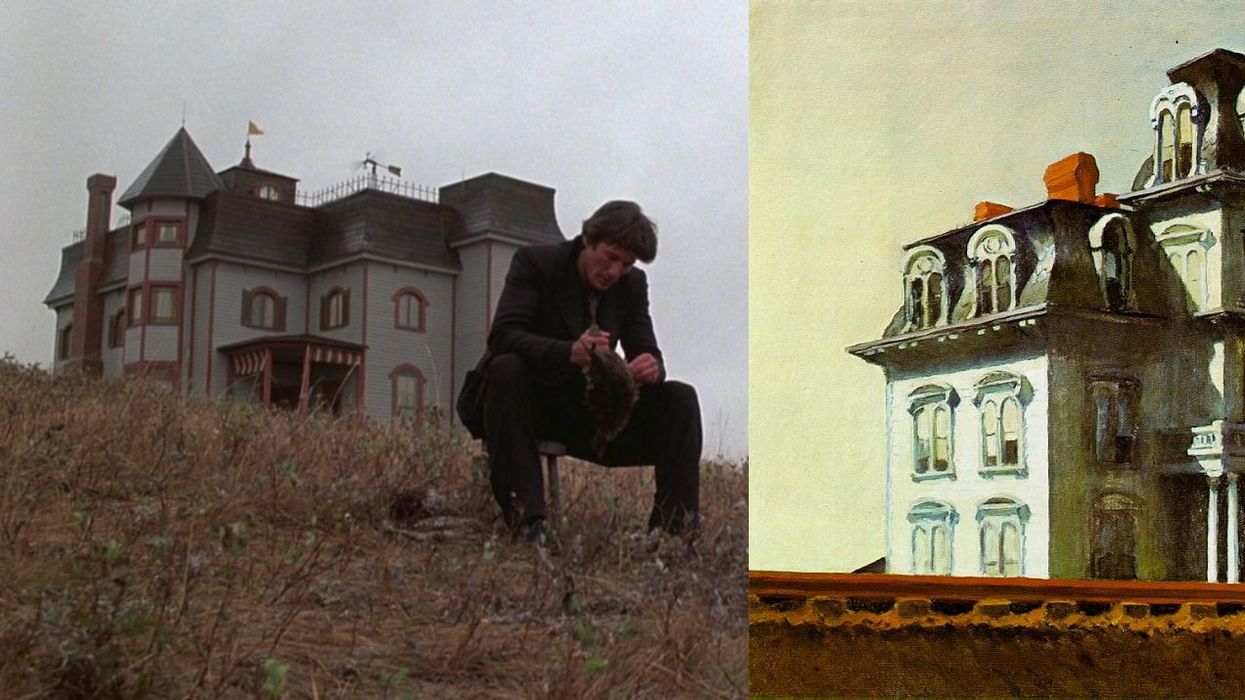Watch: How Edward Hopper's Plaintive Visions of Americana Influenced Cinematography
Edward Hopper left a giant brush mark on contemporary cinema.

Paintings have influenced some of the most iconic compositions in the history of cinematography. From Michael Mann's dead-ringer recreation of Alex Colville's "Pacific" in Heat to Christopher Nolan's not-so-subtle homages to M.C. Escher in Inception, directors and cinematographers never cease to draw inspiration from the very first masters of light: painters. (In fact, Stanley Kubrick and his DP John Alcott meticulously shot the entirety of Barry Lyndon to resemble 18th-century paintings.)
But perhaps no other artist has left such an indelible mark on cinematography than Edward Hopper, America's most famous realist painter. Hopper's painting "The House by the Railroad" inspired not one, but two famous cinematic abodes: the Bates house in Alfred Hitchcock's Psycho and the farmhouse in Terrence Malick's Days of Heaven.
Editor Ignacio Montalvo has compiled a supercut highlighting Hopper's direct influence on cinema, placing his paintings side-by-side shots from films that borrow heavily from his visual language. In the video below, Hopper's melancholic scenes depicting the dawn of modernism and its attendant alienation are seen to have inspired films as diverse as Wim Wenders'Paris, Texas, the Wachowskis' The Matrix, Woody Allen's Manhattan, and more.











